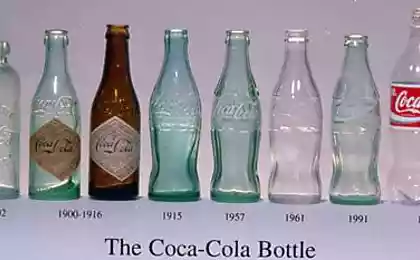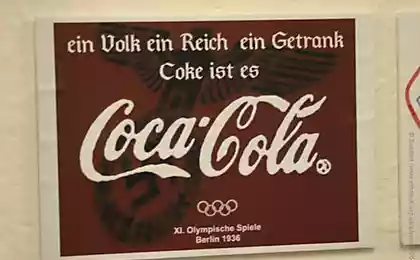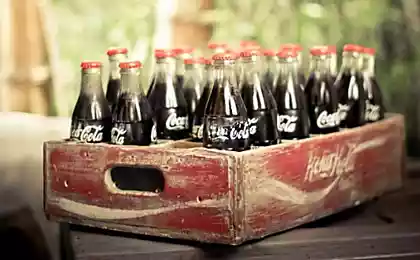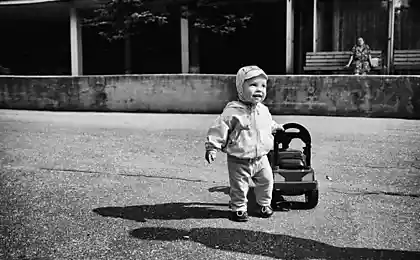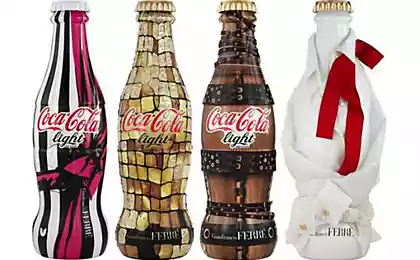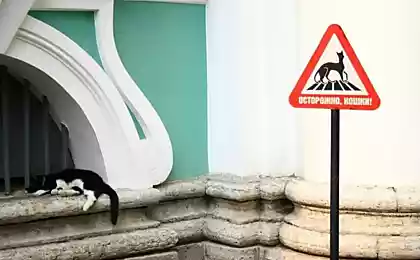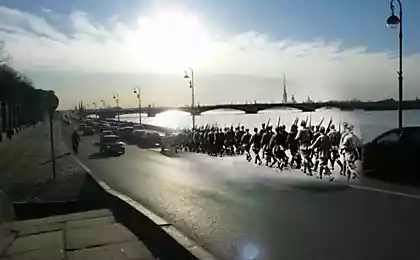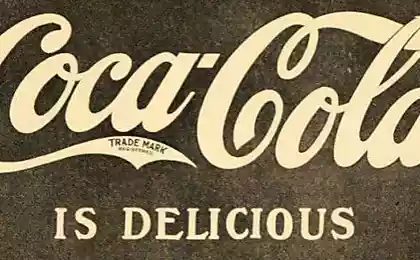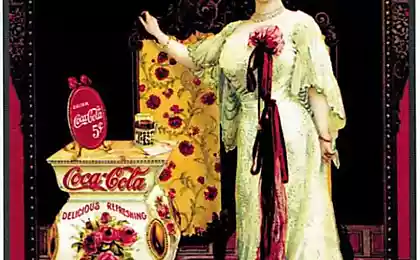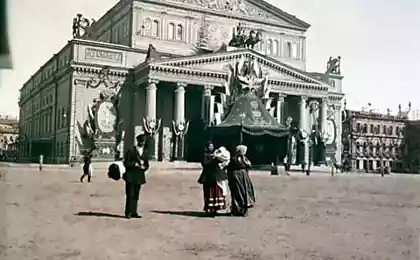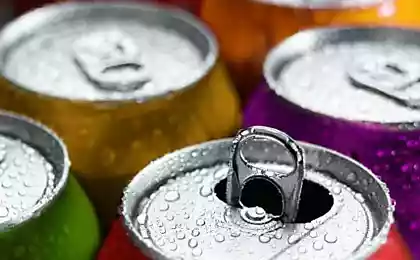1194
Old Village - the repository of the Hermitage
During a trip to St. Petersburg, organized by Coca-Cola, editorial Bigpicture.ru able to visit not only in the laboratory of restoration of tempera paintings, but also in the "old village" - Restoration and Storage Centre of the Hermitage, which houses more than 1, 2 million exhibits. We offer you a cursory tour of the store and the ability to look into other restoration workshops Hermitage.
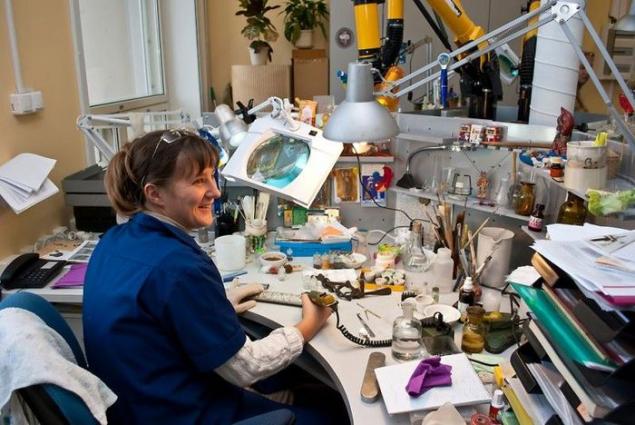
When the storage function class for blind and visually impaired - & quot; «Past at Your Fingertips» & quot ;, in which children can learn more about archeology, own "feel" the past with special layouts. For example, in the photo - the layout of the actual settlement of ancient Russia, recreated by archaeologists. All the details, very textured, "talking" to sensitive fingers blind people.
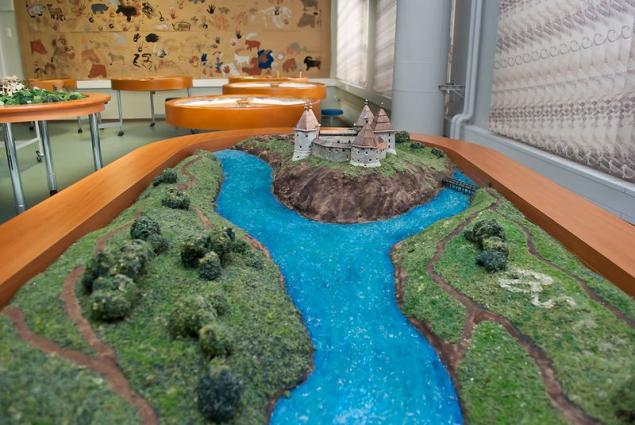
Here there are numerous objects from different eras. Of course they are a remake, but with their help, children can learn more about the life of the past.
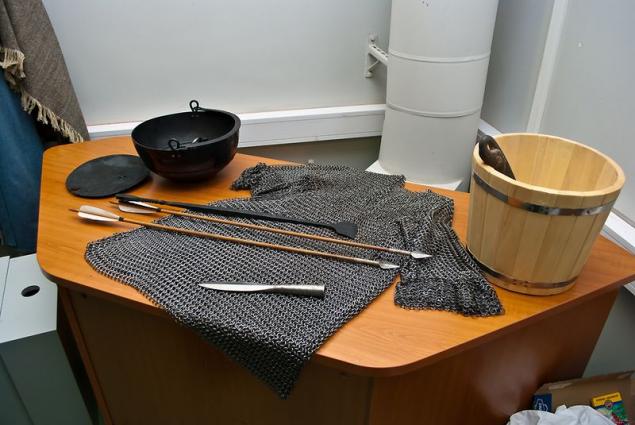
For example, a "couple" of ancient Pskov and two curious bloggers.
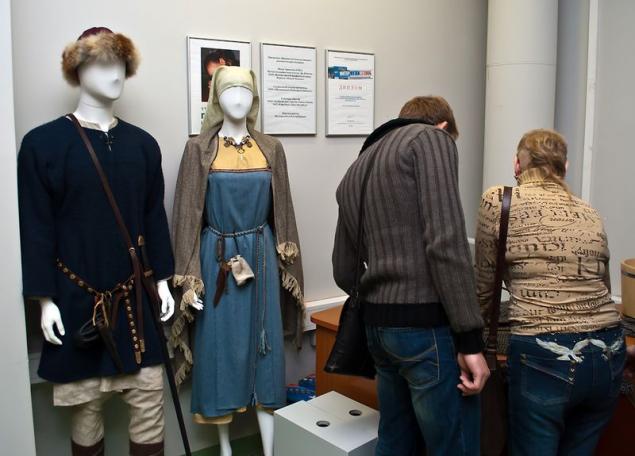
At Restoration and Storage Centre Old Village runs a lot of restoration workshops. Particularly impressed by the workshop for the restoration of metal ...
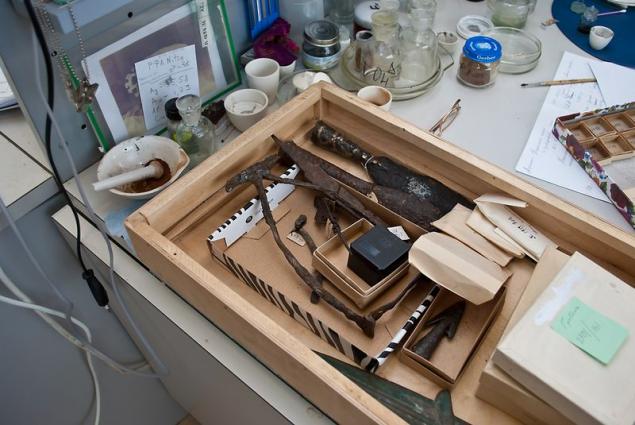
In the middle of a small room is a huge desk, which is divided by partitions into three areas, so there are three jobs for restorers.
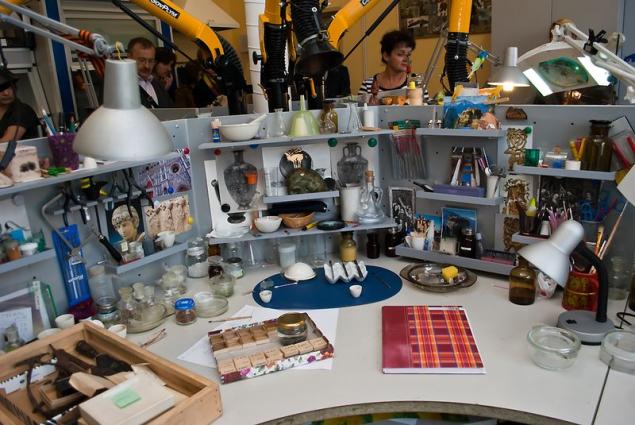
Here it is - the workplace metal restorer.
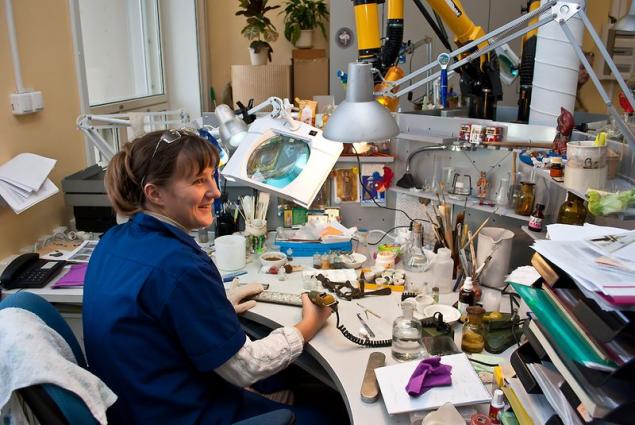
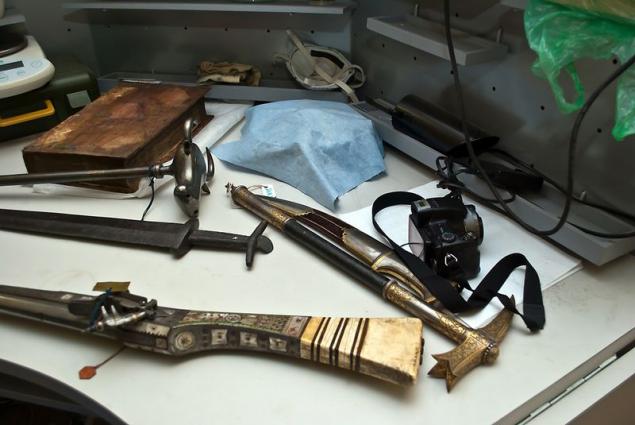
Restoration of Claymore.
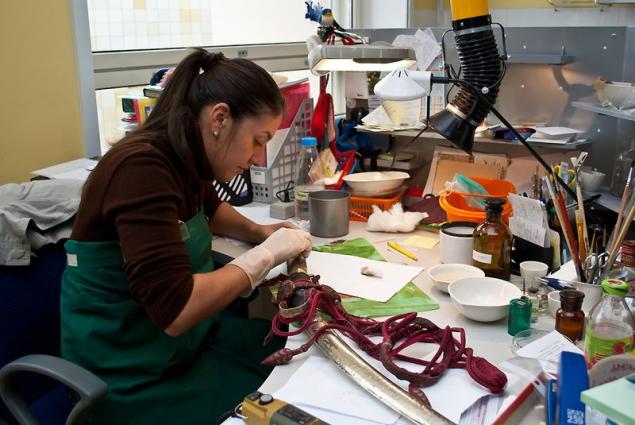
It restores not only weapons, but also metal salaries of old books.
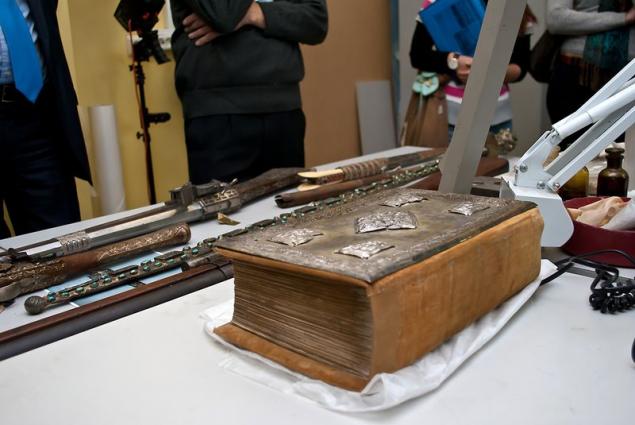
Restorer at work.
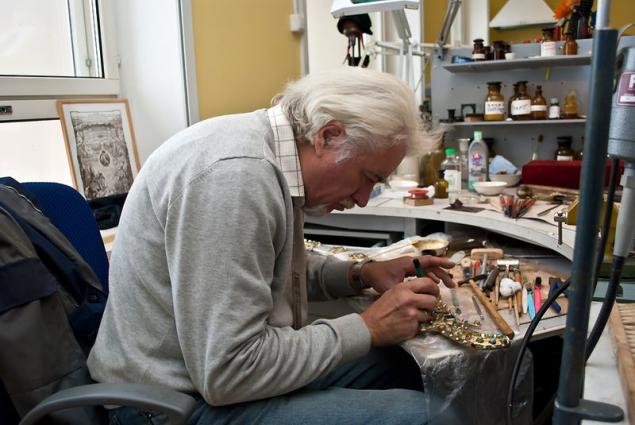
Here the salary taken off the books.
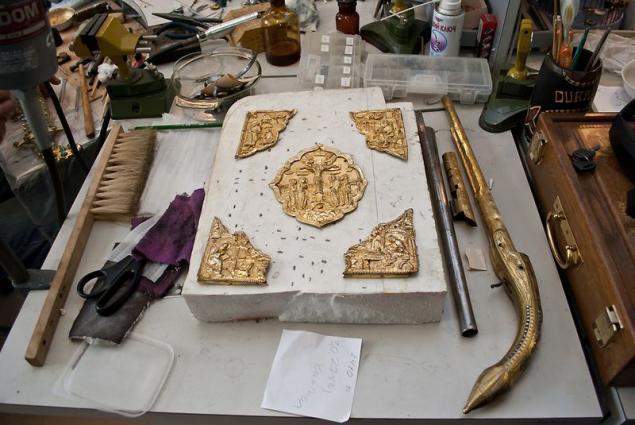
In the workshop a lot of all high-tech equipment. Especially struck a compact device, which determines the precise composition of the alloy.
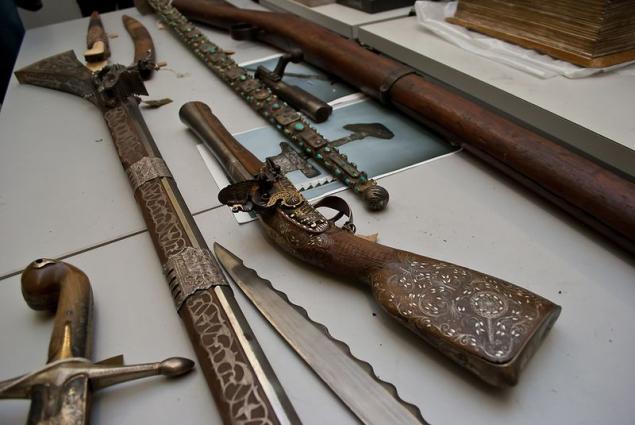
Chemistry in the service of the restorers.
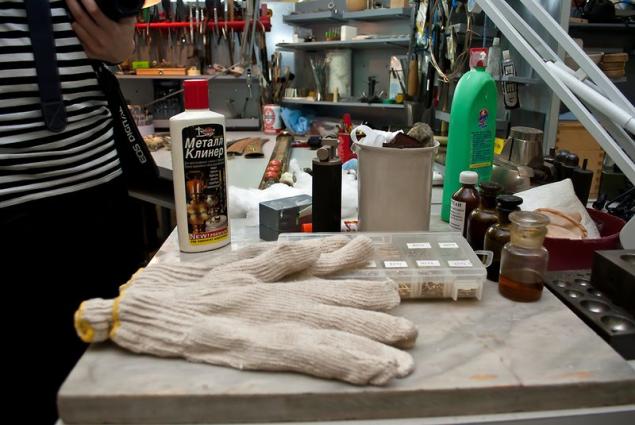
In the old village, even banal alarm on doors framed unusual.
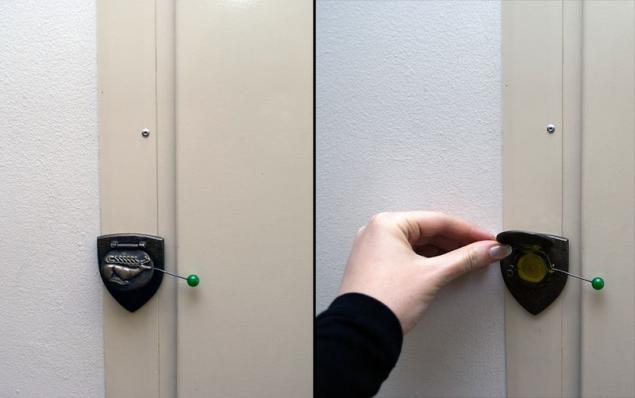
Then we waited for restoration workshop easel oil painting.
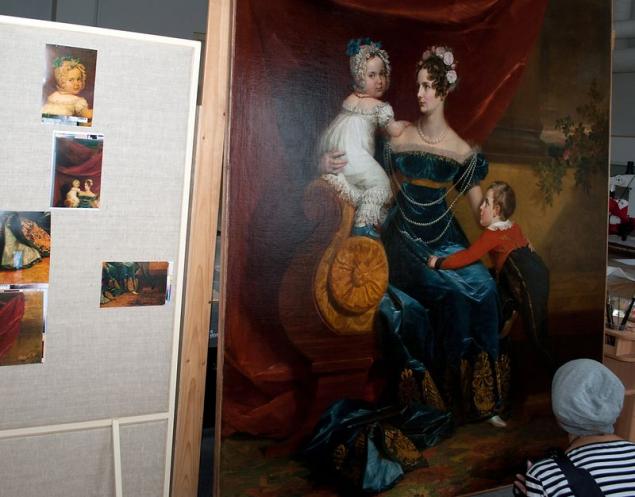
As with the restoration of the picture painted in tempera - restorers oil paintings reproductions are validated against different eras, make X-rays pictorial layers and so on. Sometimes even have to carry a piece of art on a different basis. And all because of a bug grinder - he can eat cleaned board on which a medieval master painted his picture.
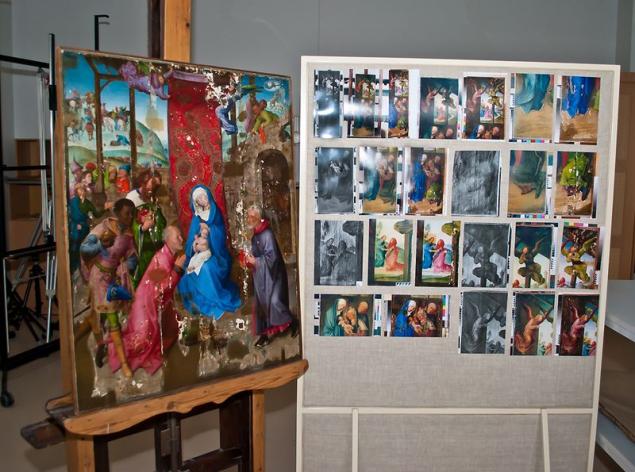
After restoration workshops, we went to the very Repository. To say that it is - huge, it does not say anything. We wandered through the endless rooms, located on several floors, about two hours. It was a real marathon museum.
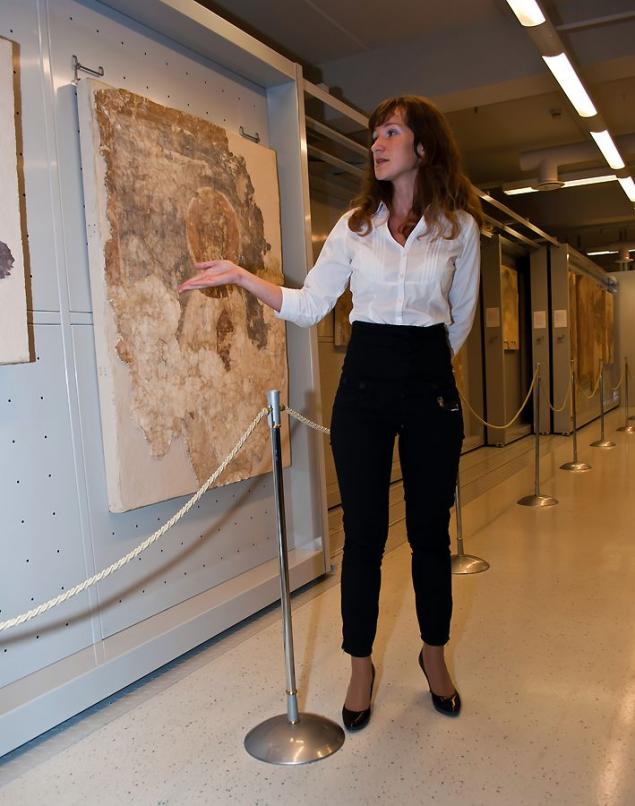
Medieval frescoes Smolensk and Pskov - they were taken from the walls of temples, excavated by archaeologists.
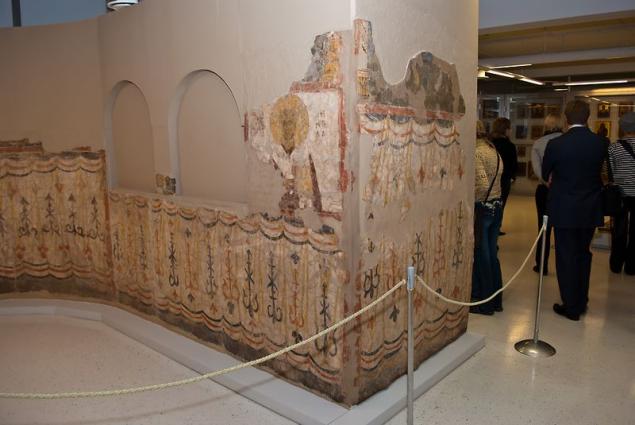
Detail of the floor of the palace of Vasily III in the Alexander settlement.
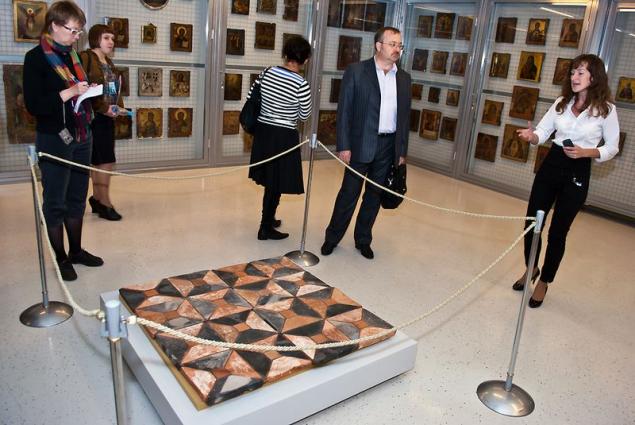
Garuda bird from a single piece of mahogany. Donated by the President of Indonesia in 2002.
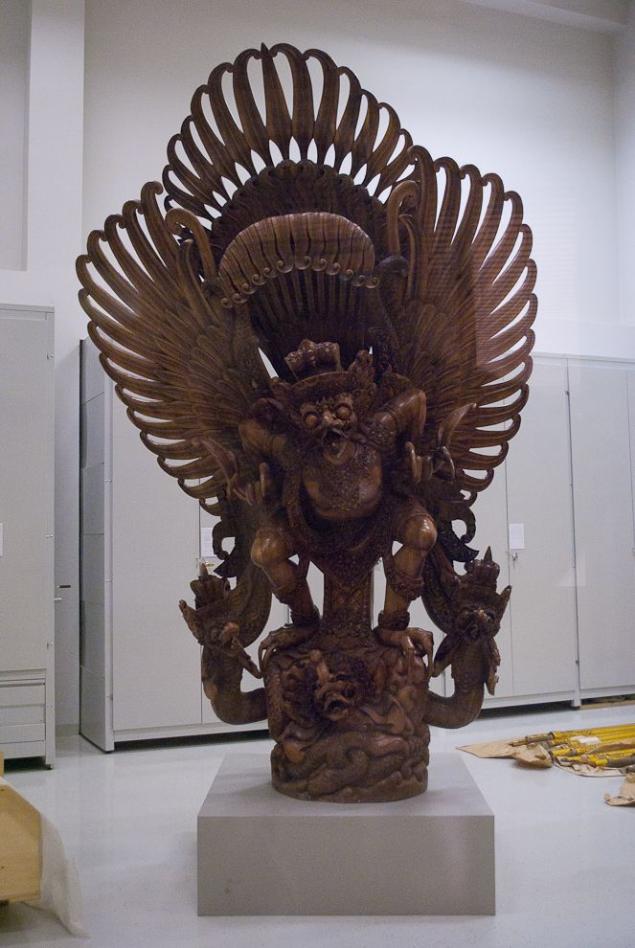
In the hall of sculptures.
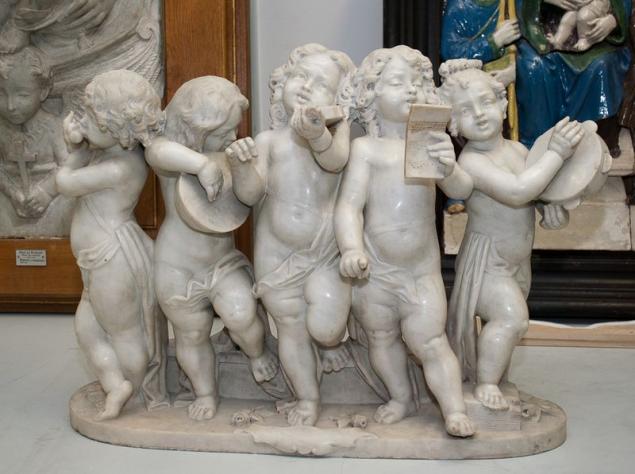
Janus
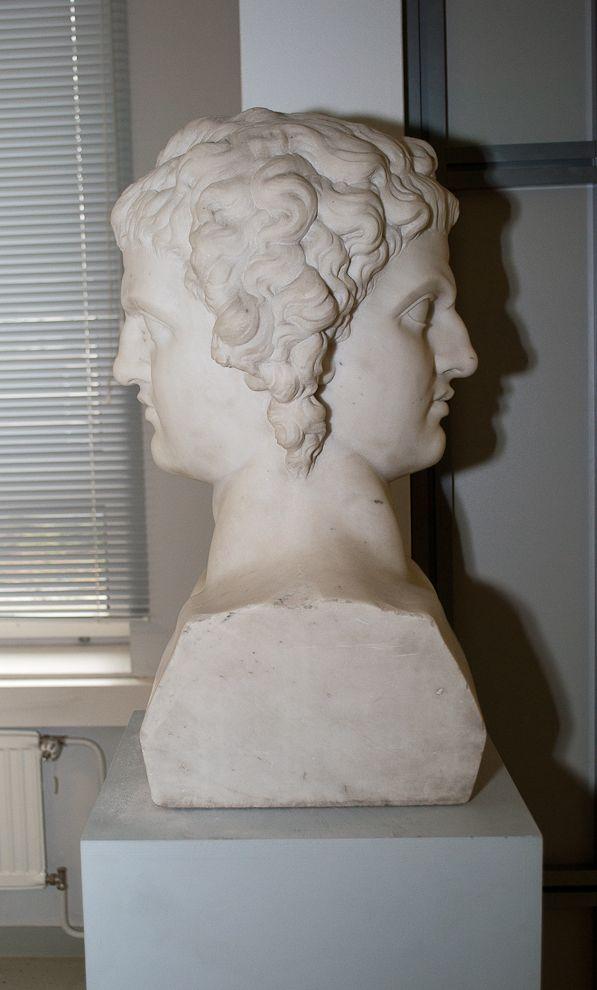
In the hall there are sculptures and contemporary works ...
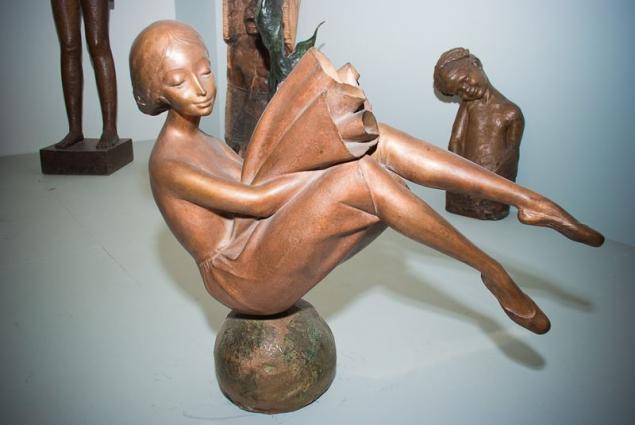
... And classic ...
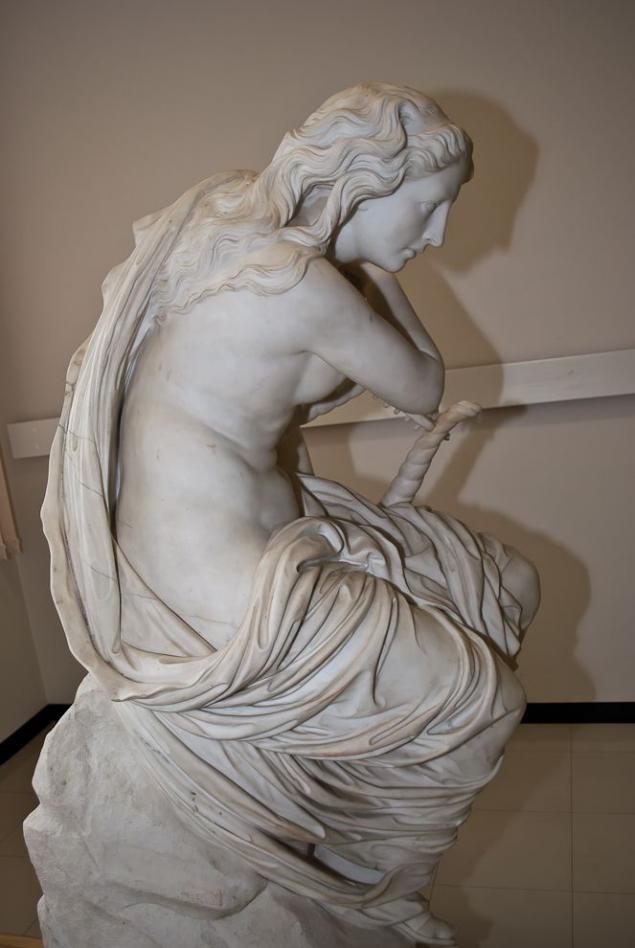
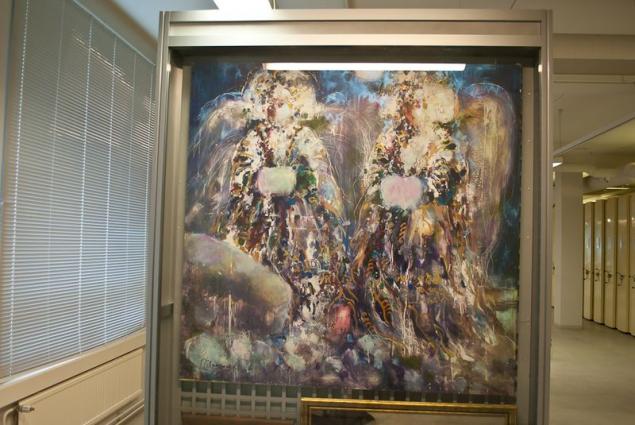
Pictures are stored in special racks for storing paintings, which supports the desired humidity and temperature.
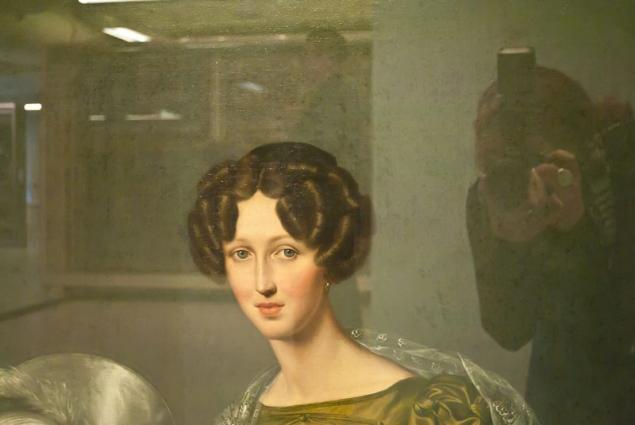
Rack with icons
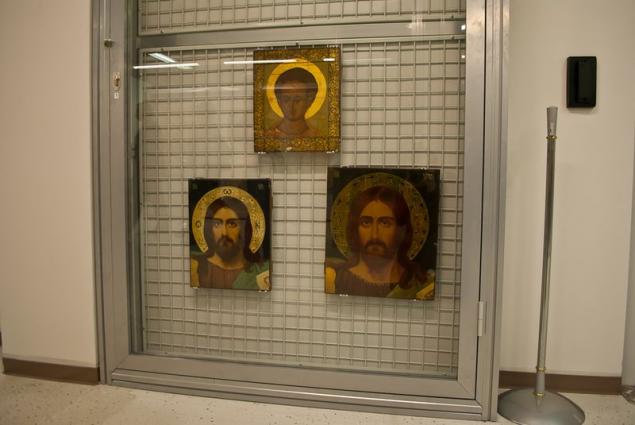
Frescoes of the ancient Buddhist temple cave Uighurs. (By the way, modern Muslim Uighurs have long). The temple was discovered by the Germans during World War II. The frescoes were cut from the walls of the Sabres.
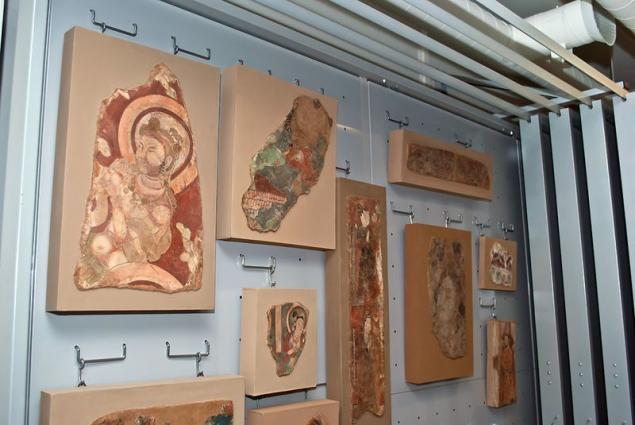
After the war, some of them fell into the Soviet Union, and some remained in Germany. Due to the fact that they can not be fragmented frescoes restore.
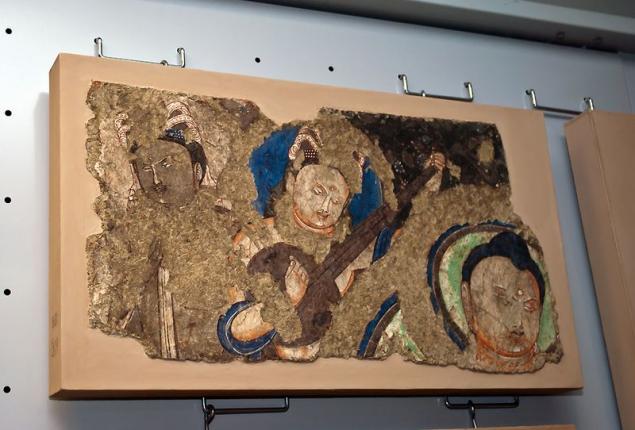
The last room was the room of the carriage, which collected many old carriages and sleighs.
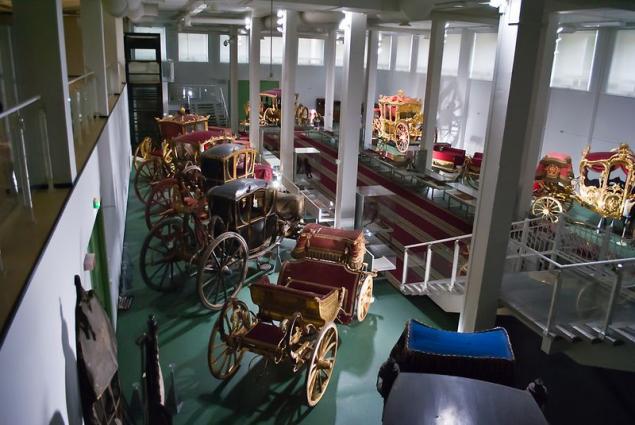
via source

When the storage function class for blind and visually impaired - & quot; «Past at Your Fingertips» & quot ;, in which children can learn more about archeology, own "feel" the past with special layouts. For example, in the photo - the layout of the actual settlement of ancient Russia, recreated by archaeologists. All the details, very textured, "talking" to sensitive fingers blind people.

Here there are numerous objects from different eras. Of course they are a remake, but with their help, children can learn more about the life of the past.

For example, a "couple" of ancient Pskov and two curious bloggers.

At Restoration and Storage Centre Old Village runs a lot of restoration workshops. Particularly impressed by the workshop for the restoration of metal ...

In the middle of a small room is a huge desk, which is divided by partitions into three areas, so there are three jobs for restorers.

Here it is - the workplace metal restorer.


Restoration of Claymore.

It restores not only weapons, but also metal salaries of old books.

Restorer at work.

Here the salary taken off the books.

In the workshop a lot of all high-tech equipment. Especially struck a compact device, which determines the precise composition of the alloy.

Chemistry in the service of the restorers.

In the old village, even banal alarm on doors framed unusual.

Then we waited for restoration workshop easel oil painting.

As with the restoration of the picture painted in tempera - restorers oil paintings reproductions are validated against different eras, make X-rays pictorial layers and so on. Sometimes even have to carry a piece of art on a different basis. And all because of a bug grinder - he can eat cleaned board on which a medieval master painted his picture.

After restoration workshops, we went to the very Repository. To say that it is - huge, it does not say anything. We wandered through the endless rooms, located on several floors, about two hours. It was a real marathon museum.

Medieval frescoes Smolensk and Pskov - they were taken from the walls of temples, excavated by archaeologists.

Detail of the floor of the palace of Vasily III in the Alexander settlement.

Garuda bird from a single piece of mahogany. Donated by the President of Indonesia in 2002.

In the hall of sculptures.

Janus

In the hall there are sculptures and contemporary works ...

... And classic ...


Pictures are stored in special racks for storing paintings, which supports the desired humidity and temperature.

Rack with icons

Frescoes of the ancient Buddhist temple cave Uighurs. (By the way, modern Muslim Uighurs have long). The temple was discovered by the Germans during World War II. The frescoes were cut from the walls of the Sabres.

After the war, some of them fell into the Soviet Union, and some remained in Germany. Due to the fact that they can not be fragmented frescoes restore.

The last room was the room of the carriage, which collected many old carriages and sleighs.

via source
